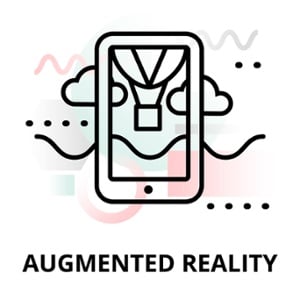Sup y'all Happy New Year! This is part 2 of a series of reflective posts. Missed the first part? No worries click here.
I've rounded out 2017 by finishing my first course with MIT's Executive Education program studying the Business Implications of Artificial Intelligence. I'm happy to continue my musings on what I've learned and the discussions that took place with my classmates. This 2nd module focused on Natural Language Processing. What is that? What the heck does it do and why does it matter?? Well let's talk...

When you call the customer service number for your bank, cable company (the worst), insurance company, or other service providers these days, chances are good your call will be answered by an integrated voice response (IVR) system instead of a real person. Early IVR systems were limited to understanding keypad entries only (“Press 1 for complaints, press 2 for sales…”). More recent versions can understand human speech, up to a point. The better ones will even ask “In a few words, tell me what you’re calling about".
Be honest: When you encounter this type of IVR system, do you try to play along with it, or do you immediately say “Agent” or “Representative” in hopes of getting a real person to talk to? I do the latter every single time, or pro-tip: use gethuman.com to bypass the system entirely. Thank me later.
Most of us try to skip ahead in the line right? That's understandable because often your problem can’t be described “in a few words,” or doesn’t fit into one of the handful of categories you are presented with. Playing the IVR game often means going around in circles and getting nowhere. Talking to a real person enables you to cut to the chase and, with any luck, get quick resolution and be on your way. Or in my personal experience, get transferred to at least 25 different departments before the issue is solved.
The Brave New World of Natural Language Processing
Recent discussions in my coursework at MIT’s Sloan School of Management have revolved around a particular application of machine learning that, sooner or later, may eliminate the option of talking to a real customer service rep, in such a way that you won’t even miss that human touch. This is the up-and-coming technology of natural language processing, and its cousins, natural language generation and, someday, natural language understanding.
So, a quick rundown:
- Natural language processing (NLP) is the ability of a computer to parse human speech and turn it into a query (such as a web search) or a command. Amazon’s Alexa product line is a good example of the current state of the art in NLP. However, NLP is not limited to speech recognition—more on this later. Siri brought this to the mainstream with the iPhone 4S but Siri absolutely sucks in comparison to the competition.
- Natural language generation (NLG) is the ability to take data—for example, the day’s action in the gold futures market—and “write” about it, as in those articles you read on marketwatch.com and other financial websites. Kinda neat, kinda spooky.
- Natural language understanding (NLU) is the far future of language processing; it’s the ability of a computer to actually converse with a human. This may be your future customer service rep. Or your new best friend, I'm not here to judge.
Business Applications for NLP
In my current role at AndPlus, we try to take these emerging technologies and bring them to life in a business setting. How can our clients and prospects benefit from these emerging technologies? What is the business value of implementing this new tech? There are so many gimmicks and half-baked frameworks that it's tough to discern what's worth the investment.
At the moment, Alexa and similar products are fun things to have in your home. But the real impact of NLP is going to be felt in business applications. Businesses, by and large, are interested in any technology that can reduce costs, increase productivity, and improve the customer experience (remember the cost leadership bit in Part 1 of this blog?).
Here are some ways that NLP and similar technologies are expected to help with all of these objectives. I'm just spitballing here and would love to hear your ideas!
- NLP can be used not only to understand spoken questions and commands but to comb through tons of unstructured text information to gain insights into market sentiment, customer opinions, brand reputation, the competitive landscape, and more. This is soul-sapping work for a human, but a computer can process much more information more quickly and without distractions.
- Similarly, law firms and prosecutors can use NLP to examine documents in the discovery process for civil and criminal cases. By identifying documents that could be relevant to a case, NLP can make the discovery process both more thorough and more efficient.
- Doctors, hospitals, and medical researchers can use NLP to ferret out information about various diseases and other maladies, the effectiveness of drug treatments and other therapies, and more by parsing text-based information in electronic health records. This can help identify previously unknown drug side effects and interactions, symptoms, and other information buried in these records, waiting to be discovered.
- NLP can transcribe conversations with customer and technical support personnel and customers, and can help identify the quality of the customer experience. Behavioral or knowledge-level issues with representatives can be identified and corrected quickly and accurately.
- With NLG, routine data-driven news articles can be written by machine and checked by a staff writer or editor prior to publication. This should free staff writers for research, interviews, and more in-depth journalism.
These examples are only the tip of the iceberg—NLP technology will soon work its way into business-related applications in surprising ways. The future of this technology is a clean slate and I’m eager to see how business in general (and AndPlus clients in particular) would like to apply it.
At the very least, the IVR experience may soon be less exasperating when calling customer service on the phone; you might even enjoy getting answers to your questions or resolving issues without having to talk to a human. Wouldn’t that be nice?
Click here for Part 3 of this series.
Extra reading: Apple's Machine Learning blog is an underrated resource. Peep this post about On-Device Speech Synthesis (the new voice of Siri on iOS 11)















